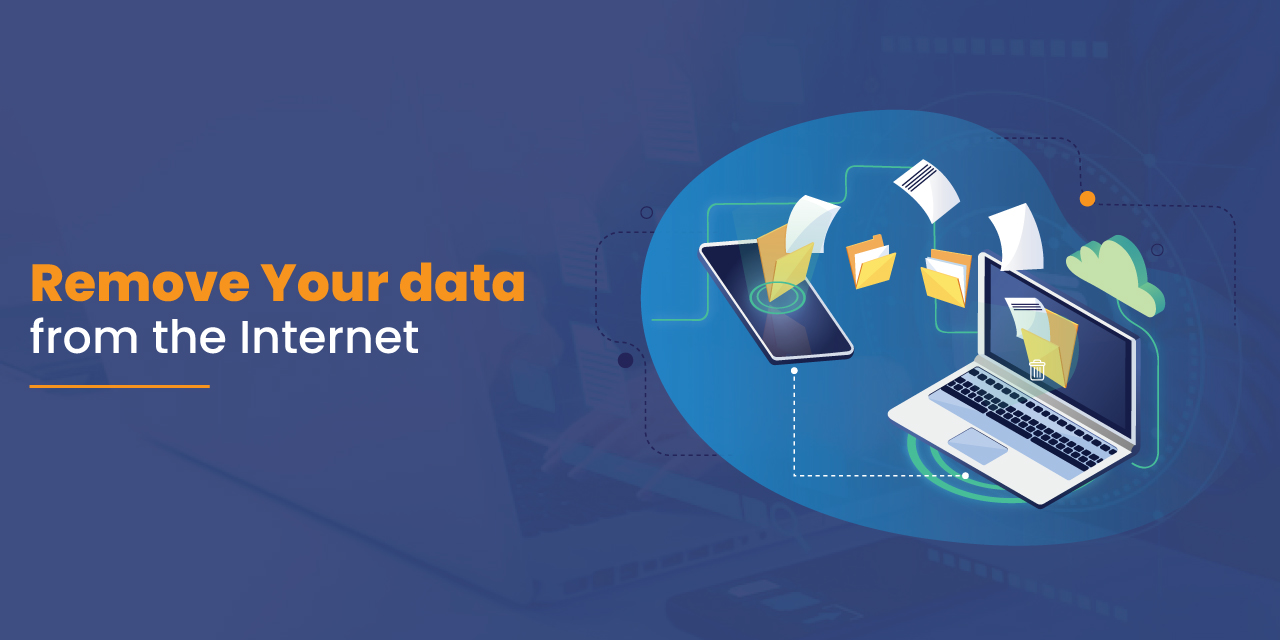
In today's digital age, personal information is often shared and becomes part of public records, easily accessible for anyone to search and view. Companies frequently collect this data from publicly available sources without your knowledge or explicit consent, as it is considered a legitimate practice. Removing personal data from the Internet can be a challenging task, as once your information is collected, it can be copied, shared, and sold to other sources.
Key Takeaways
In a nutshell, there are 2 ways to remove your personal data from the Internet.
- Use data removal services, i.e. DeleteMe, DataSeal, or Incogni
- Do-It-Yourself (DIY)
Personal information can be used in various ways, including targeted marketing, personalized services, and analytics to gain insights into consumer behavior. Companies utilize personal data to tailor advertisements, enhance user experiences, ensure account security, prevent fraud, and fulfill legal obligations. It is crucial for organizations to handle personal information responsibly, adhering to privacy laws, and respecting individuals' privacy rights. However, personal data can be leaked through data breaches, third-party data sharing, and insider threats.
Do-It-Yourself
As a consumer of the Internet, it is our responsibility to protect our personal information from the Internet. The best way to protect your personal data is to be careful about what you share online. Think twice before posting anything that you wouldn't want the world to see. Here are some steps you can take to minimize your online presence and remove your personal data from the Internet.
- Google yourself: Start by searching for your name on Google to see what information is available about you. Take note of the websites, social media profiles, or any other platforms that display your personal information.
- Request removal from websites: Once you've identified any websites that are hosting your personal information, reach out to the webmasters of the websites and request them to remove your data. Provide clear instructions about which specific data you want them to remove. Be sure to keep a record of your requests, including the date and time you made them, as well as the name of the person you contacted.
- Delete unnecessary accounts: Identify any online accounts, social media profiles, or forums that you no longer use or want to keep. Deactivate those accounts to remove your personal data from those platforms.
- Remove personal information from social media: Review your privacy settings on social media platforms to limit access to private information, and avoid sharing sensitive data unnecessarily. Remove any personal details, such as your address, phone number, or email address, that you don't want to be publicly accessible. Be cautious about sharing personal information online.
- Opt-out of data broker websites: Data broker websites collect and sell personal information. Visit these websites and look for an opt-out or removal option. Keep in mind that this process may vary for each website, and you may need to follow their specific instructions or contact them directly.
- Manage online directories: Search for online directories that list personal information and request removal from those directories. Some directories may have a specific removal process, while others may require you to contact them directly.
- Use a privacy service: There are a number of privacy services that can help you remove your personal data from the Internet. These services will typically scan the web for your personal information and then contact the websites that are hosting it, requesting that it be removed. We offer privacy scan tool to allow you to search data brokers and online directories for hosting your personal data.
How do you protect your personal data?
If you're concerned about your privacy, it's important to take steps to protect your personal data. By following the tips above, you can help to reduce the amount of personal information that's available online. Here are some additional tips for protecting your personal data:
- Use strong passwords and don't reuse them across multiple websites. You may use our strong password generator tool to create a new password.
- Be careful about what information you share on social media.
- Enable two-factor authentication whenever possible.
- Be aware of the privacy settings on your devices and apps.
- Keep your software up to date.
- Be skeptical of emails and links from people you don't know, and never click on suspicious links. We have a phishing detection tool that reveals shortened URL.
Conclusion
By following the steps described above, you will be able to remove your personal data from the Internet. It's important to note that even if you remove your personal data from the internet, it's possible that it may still exist in some form. Complete removal of personal information from the Internet may not be possible in all cases. It's essential to be vigilant and regularly monitor your online presence to ensure your data remains as private as possible.
Alternatively, you may use data removal services from companies like DeleteMe to remove your data from the Internet.
Share this post
Leave a comment
All comments are moderated. Spammy and bot submitted comments are deleted. Please submit the comments that are helpful to others, and we'll approve your comments. A comment that includes outbound link will only be approved if the content is relevant to the topic, and has some value to our readers.




Comments (0)
No comment